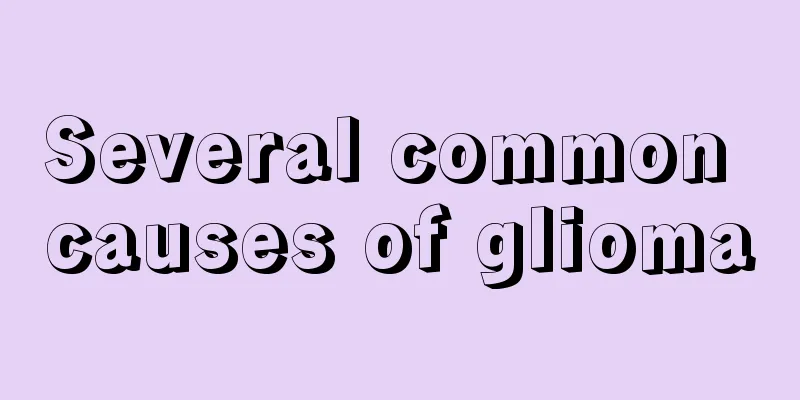How to care for nosebleeds caused by nasopharyngeal carcinoma

|
What is the color of nosebleed caused by nasopharyngeal cancer? How to take care of it? Nosebleed is one of the typical clinical symptoms of nasopharyngeal carcinoma. In the early stage of nasopharyngeal carcinoma, bloody nasal discharge or bloody nasal discharge from the mouth is more likely to occur than weight; in the late stage of rhinitis, heavy nosebleed may occur. Because the primary cancer breaks through the surface mucosa and causes runny nose, the nasal secretions often have blood streaks or blood clots, which is common after getting up in the morning and is one of the early symptoms. In the late stage of cancer ulceration, there may be purulent runny nose or a large amount of bleeding that is difficult to stop, and it may even be life-threatening. If a NPC patient has nose bleeding, the general care in life is as follows: First: Correct bad eating habits: Do not eat salted fish and pickled products. If the family disease incidence is high or a direct relative has a history of nasopharyngeal cancer, a regular physical examination of the nasopharynx should be conducted every year. Blood tests for EB virus can be performed during the physical examination. Second: pay attention to diet. Patients with nasopharyngeal cancer bleeding should eat more benign foods such as bitter melon, tomatoes, cabbage, houttuynia, purslane, etc. At the same time, we should avoid drinking alcohol and spicy and overheated foods. Third: Regularly do exercises such as neck rotation, teeth tapping, cheek puffing, smiling, and mouth opening. Patients with dry mouth can use pear slices in their mouths to relieve discomfort; patients with radiation pharyngitis can gargle with a mouthwash before meals and before going to bed. Fourth: If heavy bleeding is found, you should lie down immediately, tilt your head to one side, and highlight the bleeding in time to prevent coagulation and suffocation. At the same time, you should urgently notify the doctor to keep the airway open. The patient can also place an ice pack on the upper part of the nose or press the external carotid artery with your fingers to stop bleeding, cooperate with the doctor to block the nasal cavity to stop bleeding, and pull out the yarn after 24 to 48 hours. However, it is forbidden to blow the nose or pick the nose after the bleeding stops to prevent bleeding again. |
<<: How long can you live after surgery for advanced gastric cancer
>>: How to prevent lymphoma and what are the treatment methods
Recommend
Can children use hot packs?
In winter, girls especially like to use hot packs...
Diet care for bladder cancer
Bladder cancer is also a common cancer disease an...
How to treat arteriosclerosis? Health porridge can help you resolve
Arteriosclerosis is not terrible. As long as you ...
What are the prevention methods for uterine cancer
In recent years, uterine cancer has become one of...
Is WBC 29 high?
When doing a routine blood test, if the white blo...
How much does surgery for uterine teratoma cost
Uterine teratoma is not a simple physiological di...
What to do if you can't eat in the late stage of esophageal cancer
When patients with advanced esophageal cancer are...
How to choose a hospital for the diagnosis and treatment of bladder cancer
We have a lot of doubts about the occurrence of b...
What are the possible symptoms of early liver cancer? Summary of atypical symptoms of early liver cancer
When people think of liver cancer, they think of ...
Can uterine teratoma be cured?
No matter what kind of disease it is, once it com...
Is lung cancer contagious? Introducing common knowledge about key lung cancer diseases
Many lung cancer patients, their families, and pe...
Symptoms of prostate cancer bone metastasis
Prostate cancer is a fatal injury to men. It is n...
Can advanced malignant lung cancer be cured?
Can advanced malignant lung cancer be cured? Adva...
What to do with lower limb edema, you need to know these methods
Lower limb edema is relatively common in clinical...
What are the nutrient solution formulas for flowers and plants
Planting flowers and plants cannot be separated f...









